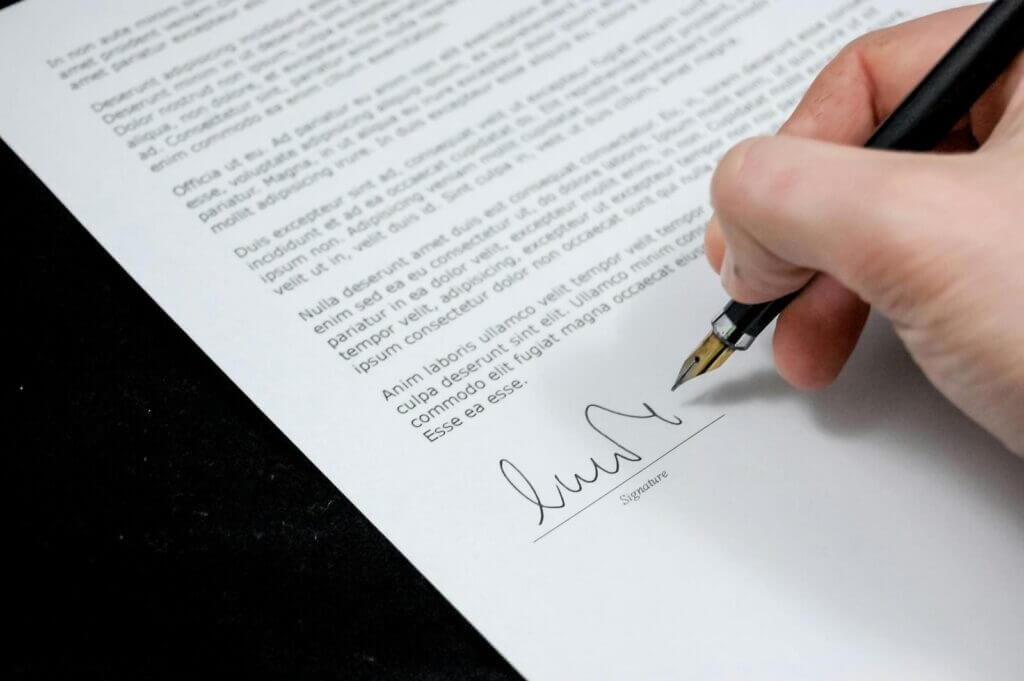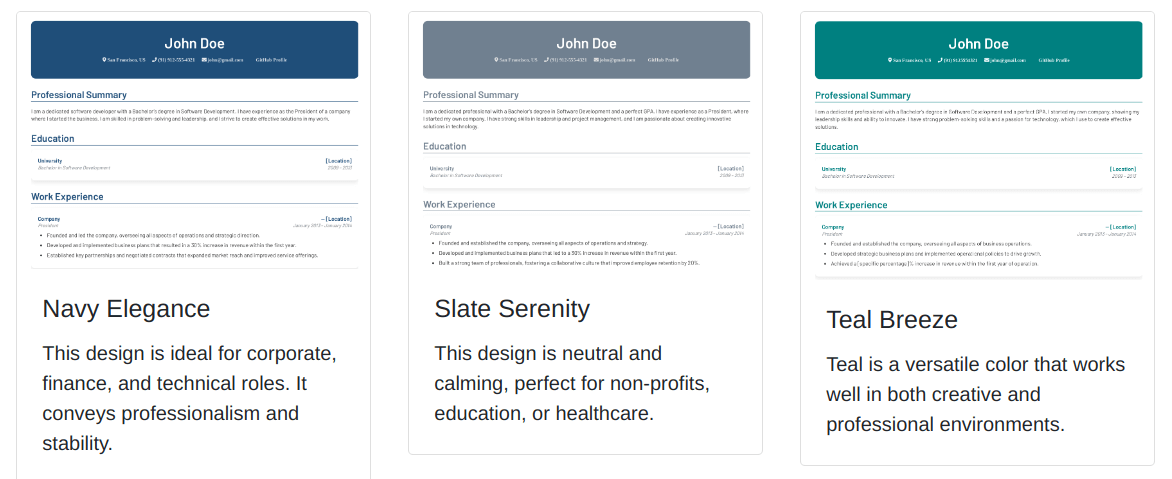Have you ever found yourself standing at a crossroads in your career, contemplating that big leap into the unknown? The moment you decide to resign can feel exciting and challenging, and that’s where the concept of a two-week notice comes into play. This seemingly simple act isn’t just a formality; it’s a powerful gesture that can shape your professional reputation and future opportunities.

What Is a Two Week Notice?
A two-week notice serves as a formal notification from an employee to their employer, expressing the intention to resign from their job. Typically, this notice is submitted at least 10 business days before the last day of work, by providing this advance notice, you allow your employer to prepare for your departure, whether that means hiring a replacement or redistributing your tasks among team members.
The duration of a two-week notice indicates two working weeks, equating to 10 calendar days, not including weekends. The countdown starts the moment you submit your resignation letter. This gives both you and your employer a clear timeline for transition purposes, establishing expectations for your final days within the company.
The primary purpose of a two-week notice lies in professionalism and courtesy, this action allows time for your employer to minimize disruptions in the workplace. For instance, if you work in a critical role, your absence could affect project timelines, client relationships, and team morale but when you give notice, you ease this transition, enhancing the likelihood of a positive parting experience.
While providing a two-week notice is not legally mandated, it is generally seen as best practice. In some employment contracts or company policies, different notice periods may be stipulated, so it’s essential to review these documents and adhere to such policies to prevent potential conflicts and issues later on.
Essentially, a two-week notice can contribute to safeguarding your professional reputation; departing on good Terms can increase the likelihood of receiving a positive recommendation letter or reference, which is a critical factor when seeking future employment opportunities.
Importance of Giving a Two Week Notice

Giving a two-week notice stands as a cornerstone of professional etiquette. It demonstrates respect towards your employer and colleagues, fostering a positive atmosphere even as you prepare to leave. This crucial step provides the time necessary for your employer to arrange for your absence, whether that means redistributing your workload or seeking a new hire.
- Professional Image: You enhance your professional image by offering a notice. In fields like healthcare and finance, reputation holds significant weight, and leaving without notice can result in negative references that linger long after your departure, impacting future job prospects.
- Maintaining Relationships: You maintain valuable relationships by giving notice. Your coworkers and supervisors have shared experiences and built camaraderie with you, so departing gracefully preserves these connections and expands your network, potentially opening doors in the future.
- Preparing for Transition: You help a smoother transition for your team by notifying them in advance. This allows time for knowledge transfer, ensuring that ongoing projects remain on track, this ensures your colleagues can continue their work without disruption.
- Standard Practice: You align with standard industry practices by providing a two-week notice. While not legally required, this action is expected in most workplaces, a survey from The Harris Poll shows only 55% of employees provided notice when leaving jobs, yet doing so is critical for fostering a culture of professionalism.
- Acknowledging Your Value: You acknowledge your value within the organization by giving notice. Leaving strategically gives your employer the chance to see the contributions you made, reminding them of your commitment, it leaves a lasting impression, positioning you as a reliable and respectful employee.
You should consider the significant impact of your resignation notice, and reflect on how you want to be remembered in your industry. How can your actions today shape your professional brand tomorrow? Showing courtesy and professionalism today can secure positive references and opportunities down the line.
How to Write a Two Week Notice Letter
Writing a two-week notice letter can be challenging, but it doesn’t need to be. Keeping it simple, clear, and professional is key to ensuring a smooth transition.
1. Address the Letter
Your letter should start with your Contact information at the top, followed by the date, and then the recipient’s information, including their full name, title, company name, and company address. Professionalism is important, and this format helps achieve that.
2. State the Purpose of the Letter
In the opening sentence, clearly state your intention to resign. For example, “I’m writing to formally resign from my position as [Your Job Title], effective two weeks from today.” This statement provides clarity and sets the expectation for your departure date.
3. Provide a Reason for Leaving (Optional)
While it’s not necessary to provide an explanation for your resignation, doing so can help maintain a positive relationship. Choose brevity and tact when expressing your reasons.
Example 1
“I’m leaving to pursue another opportunity that aligns with my career goals.”
Example 2
“After careful consideration, I’ve decided to focus on my personal development.”
4. Offer Assistance During the Transition Period
Include a line offering help during your two-week notice, this gesture demonstrates commitment and professionalism, encouraging a smooth handover of your responsibilities.
Example
“I’m available to assist in training my replacement or ensuring that my current projects are completed.”
5. Express Gratitude
Show appreciation for the opportunities you received while employed, a simple expression of thanks can leave a lasting positive impression.
Example
“I sincerely appreciate the support and opportunities for growth during my time at [Company Name].”
6. Close the Letter
End with a professional closing. A statement like “Thank you for your understanding” followed by “Sincerely” or “Best regards,” and your full name shows respect and maintains professionalism.
Example
“Thank you for your understanding.
Best regards,
[Your Full Name]”
Writing a two-week notice letter can be straightforward when you focus on professionalism, clarity, and respect. This approach not only helps maintain positive relationships but ensures a smooth transition as you move forward in your career.
How to Deliver Your Two Week Notice
Delivering a two-week notice is not rocket science, but you need to approach it with professionalism and respect to greatly improve the experience. Properly executing this process involves both in-person conversations and follow-up communications, establishing a clear and respectful transition.
In-Person Conversation Tips
You should start your two-week notice process with an in-person conversation, by scheduling a private meeting with your manager to discuss your decision. This face-to-face interaction demonstrates respect and allows for a candid discussion.
- Plan Your Approach: Prepare what to say in advance. Start by expressing appreciation for your time at the company before stating your intention to resign. For example, you might say, “I’ve valued my time here and have learned a lot, but I’ve decided to move on to pursue new opportunities.”
- Anticipate Questions: Your manager may ask why you’re leaving. It’s helpful to prepare a concise, honest response. Maintain an upbeat tone, focusing on the new opportunities rather than the negative aspects of your current job.
- Be Ready for Reactions: Understand that your employer may have mixed emotions about your departure. They may ask for feedback about your experience; provide constructive insights if comfortable, but maintain professionalism.
- Offer Assistance: Express your willingness to help with the transition, including training your replacement or wrapping up ongoing projects. This collaborative spirit strengthens your professional image.
Follow-Up Communications
After your in-person conversation, formalize your resignation through follow-up communications. Send a written resignation letter or email to document your notice.
- Structure of the Resignation Letter:
- Header: Include your contact information, date, and recipient’s information at the top.
- Greeting: Use a courteous salutation, like “Dear [Manager’s Name].”
- Body: Clearly state your intention to resign and mention your last working day, reinforcing your notice period.
- Gratitude: Thank your employer for the opportunities provided, highlighting specific experiences if possible.
- Closing: End on a positive note, expressing hope for future interactions and providing your contact information.
- Email vs. Letter: While in-person delivery is preferred, a follow-up email can be necessary in certain situations. Ensure the email maintains professionalism and clarity.
- Final Touch: After sending your resignation letter, check in with your manager to confirm they received it. This shows diligence and reinforces your commitment to a smooth transition.
What to Expect After Giving Your Two Week Notice
After submitting your two-week notice, several developments unfold that shape your final days at your company. Awareness of these transitions ensures a smooth departure and protects professional relationships.
Immediate Reactions
Expect mixed reactions from your manager and colleagues, some may express understanding and gratitude for your decision, while others might react with surprise or concern about workload impacts. Acknowledging these reactions can help maintain open communication and foster a positive engagement.
Transition Planning
During the notice period, prepare for transition discussions, your employer will likely seek details on your ongoing projects and responsibilities. You should provide thorough updates and documentation that can help ease the workload for your successor. Aim to leave your role neatly packaged for your team, ensuring they’re set up for success after your departure.
Knowledge Transfer
You should help with knowledge transfer during your final weeks at the company, offer to conduct training sessions, or create handover documents. This helps to minimize disruptions for your team and reinforces your commitment to a professional exit.
Maintaining Professionalism
Maintain professionalism throughout your notice period, and continue to fulfill your duties diligently, as fellow employees will observe your work ethic. It’s essential to uphold a high standard, reducing the likelihood of lingering negativity upon your departure. Being gracious and helpful during this time can leave a lasting impression and may benefit future employment references.
Potential Changes to Employment Status
Understand that your employer has the option to terminate your employment immediately after giving your notice; this situation can arise, particularly in at-will employment states. Prepare for this possibility by securing your next steps before resigning, whether it involves job searching or preparing for a new role, having a plan mitigates stress and uncertainty.
Final Communication
During the last week, communicate your gratitude towards colleagues and supervisors, expressing appreciation can strengthen bonds and nurture professional goodwill. Recognize that colleagues may still serve as valuable contacts in the future or co-workers, connecting over coffee or sending a farewell email can keep relationships warm and your network intact.
Lasting Impressions
The final days represent an opportunity to reinforce your personal brand, you should consider your departure as part of your professional story. Engage with co-workers, create positive memories, and ensure interactions reflect the professional you aspire to be.
Navigating the post-notice period requires attention, respect, and professionalism, engage fully during this time to ensure a smooth transition for both you and your employer while leaving lasting connections that linger long after you’ve left.
Common mistakes to avoid when writing a two weeks’ notice letter
Providing a two-week notice is a vital step in resigning professionally, many make predictable mistakes that can undermine their exit’s impact. Below are some mistakes you should avoid.
Being Vague
Clearly state your resignation intention and last working day – Avoid vague phrases that leave room for interpretation; For example, instead of saying “I’ll be leaving soon,” specify a date. Clarity in your letter enhances professionalism, ensuring no confusion during the transition period.
Unprofessional Format
Maintain a professional tone and format in your resignation letter – Use a standard business letter structure, including your address, the date, the employer’s address, a polite greeting, and a concise body. Unprofessional formatting diminishes the seriousness of your notice and can lead to misunderstandings about your intentions.
Not Having a Conversation
Always discuss your resignation with your superior before submitting your letter – This conversation demonstrates respect and allows for an open dialogue about your departure. Avoid the pitfall of simply sending an email without prior communication; in-person discussions foster better relationships and help convey your message meaningfully.
Being Too Honest
Keep your reasons for leaving out of the resignation letter – While transparency is valuable, detailing negative experiences can damage relationships and impact professional references. Focus on expressing gratitude for the opportunities received, which maintains goodwill even when your parting is bittersweet.
Updating Your LinkedIn Too Early
Change your LinkedIn status only after your last working day – Announcing your departure before notifying your employer can lead to tension and conflict. Timing is crucial; safeguard your professional relationships by maintaining discretion until the transition is explicitly communicated.
By avoiding these common mistakes, you enhance your professionalism, foster better relationships, and ensure a smoother transition when leaving your job.
Two-week notice email template
A two-week notice email serves as a formal communication indicating your intention to resign from your position. It’s a concise way to inform your employer, providing them with the necessary timeline for transition. Below is a straightforward template for your two-week notice email.
Two-Week Notice Email Template
Subject: Two Weeks Notice
Dear [Recipient’s Name],
I’m writing to formally announce my resignation from my position as [Your Position] at [Company’s Name], effective two weeks from today, [Last Working Day].
I genuinely appreciate the opportunities and experiences I’ve had while working at [Company’s Name]. The skills and knowledge gained here will benefit me as I move forward in my career.
To support a smooth transition, I’m committed to assisting in any way possible, including training my replacement and completing any outstanding projects. Please let me know how I can help during this transition period.
Thank you for your understanding and support. I wish [Company’s Name] continued success in the future.
Best regards,
[Your Name]
[Your Contact Information]
- Subject Line: Keep it clear and straightforward. Use “Two Weeks Notice” to convey the email’s purpose immediately.
- Greeting: Address your manager or supervisor professionally, using their name.
- Clear Intent: Start with a clear statement about your resignation, including your current position and the effective date.
- Express Gratitude: Mention appreciation for your time at the company and the impact on your professional growth.
- Offer Assistance: State your commitment to help a smooth transition and willingness to assist where possible.
- Closing: Sign off with a positive note, wishing the company success.
Using this template can help you craft a brief, professional communication that fulfills your obligation and preserves relationships within the company. By focusing on the core elements, you ensure clarity and respect during your departure process, setting the stage for future professional interactions.
Two-week notice letter template
When preparing a two-week notice letter, ensure clarity and professionalism in your communication. A concise letter helps convey your intention respectfully and effectively. Below is a simple template to guide you:
[Your Name]
[Your Address]
[City, State, Zip Code]
[Email Address]
[Phone Number]
[Date]
[Manager’s Name]
[Company’s Name]
[Company’s Address]
[City, State, Zip Code]
Dear [Manager’s Name],
I am writing to officially resign from my position at [Company’s Name] effective [Last Working Day, typically 14 days from the date above]. This decision wasn’t easy, and I appreciate the opportunities I’ve had to grow and learn during my time here.
I am committed to ensuring a smooth transition. I can assist in training a replacement or wrapping up projects before my departure. Please let me know how I can help during this period.
Thank you for your support and guidance throughout my tenure. I value the experience I’ve gained and hope to keep in touch moving forward.
Sincerely,
[Your Name]
This template covers essential components, including a clear statement of resignation and an offer to help during the transition. Customize it to reflect your voice but keep it professional.
Key Takeaways
- Definition and Purpose: A two-week notice is a formal resignation notification allowing employers time to prepare for your departure, typically given at least 10 business days in advance.
- Professionalism and Etiquette: Providing a two-week notice demonstrates professionalism and respect, crucial for maintaining a positive work atmosphere and safeguarding your professional reputation.
- Transition Assistance: Offering assistance during the transition period, such as training a replacement, helps ensure a smooth handover of responsibilities and minimizes disruptions for your team.
- Positive Relationships: Departing gracefully by giving notice helps preserve valuable relationships with colleagues and supervisors, which can be beneficial for future networking and references.
- Best Practices: Follow a structured format for your resignation letter and have an in-person conversation with your manager before submitting it to convey your message respectfully.
- Lasting Impressions: Your final days at a company are vital for reinforcing your personal brand; maintaining professionalism can leave a positive legacy and ensure goodwill in your professional network.
Conclusion
Giving a two-week notice is more than just a formality; it’s a vital step in maintaining your professional reputation. By providing this notice, you’re showing respect to your employer and colleagues, which can lead to positive references and future opportunities.
Your final days in the workplace are an opportunity to reinforce your personal brand and strengthen relationships. Engaging fully during this transition period can leave a lasting impression that benefits you in the long run.
Remember that professionalism and courtesy go a long way in shaping your career path. Embrace this process and make it a positive experience for everyone involved.
Frequently Asked Questions
Why is a two-week notice important?
A two-week notice is crucial as it demonstrates professionalism and courtesy. It allows employers to plan for your departure, which can minimize disruption in the workplace. Additionally, it helps maintain your professional reputation and strengthens relationships with colleagues and supervisors.
How should I deliver my two-week notice?
Start with an in-person conversation with your manager to communicate your decision. Prepare what you’ll say in advance, then follow up with a formal resignation letter or email. This ensures clear documentation of your intent to resign and leaves a positive impression.
What should I include in my two-week notice letter?
Your two-week notice letter should include a clear statement of your resignation, the last working day, an expression of gratitude, and an offer to assist during the transition. Keep it professional and concise while ensuring it reflects your tone.
What if my employer doesn’t accept my two-week notice?
In most cases, employers will respect your notice, but reactions can vary. If they don’t accept it, maintain professionalism and continue working until the agreed departure date, ensuring you leave on good terms.
Can I rescind my two-week notice?
Yes, you can choose to rescind your notice, but be aware this may lead to mixed reactions from your employer. It’s best to approach this carefully and maintain open communication about your intentions and reasons for reconsideration.


